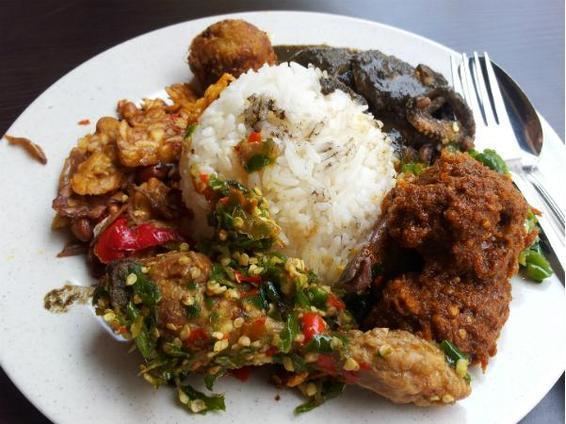 | ||
Similar | ||
Nasi padang amazing indonesian food beef rendang and gulai otak
Nasi Padang is a Padang steamed rice served with various choices of pre-cooked dishes originated from Padang city, the capital of West Sumatra, Indonesia. Nasi Padang (Padang-style rice) is a miniature banquet of meats, fish, vegetables, and spicy sambals eaten with plain white rice, it is Sumatra's most famous export and the Minangkabau's great contribution to Indonesian cuisine.
Contents
- Nasi padang amazing indonesian food beef rendang and gulai otak
- Nasi padang by kvitland
- Serving
- Dishes
- In popular culture
- References
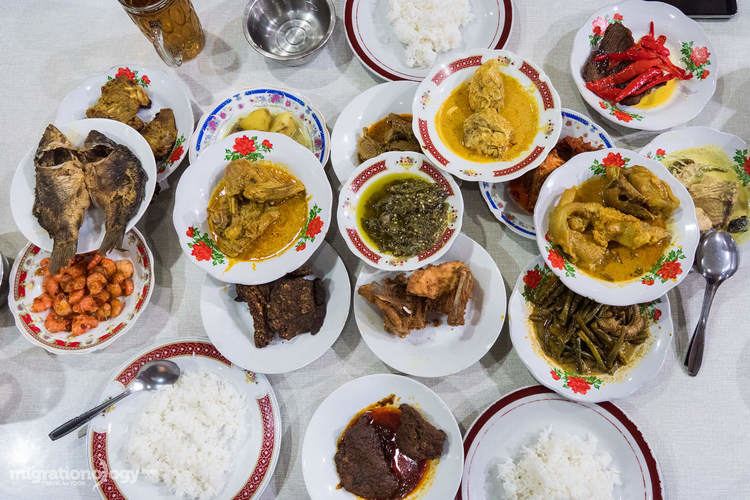
A Padang restaurant is usually easily distinguishable with their Rumah Gadang style facade and their typical window display. Nasi Padang window display in front of restaurant usually consists of stages and rows of carefully arranged stacked bowls and plates, constructed and filled with various dishes.
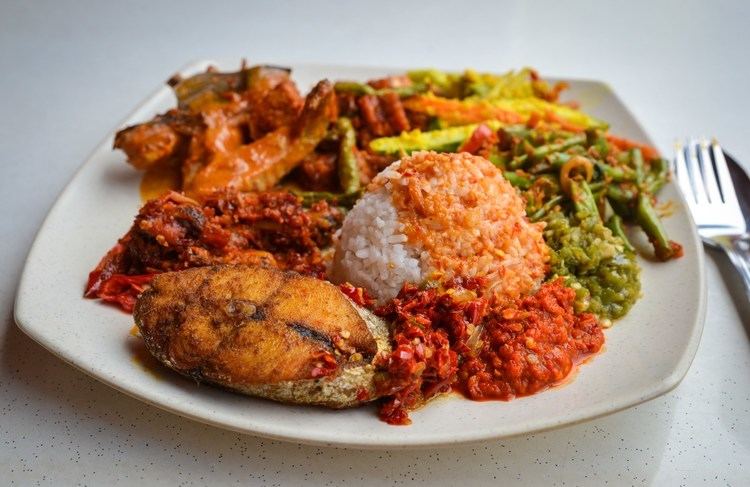
Nasi Padang is a vital part of Indonesian workers' lunch break in urban areas; when Nasi Padang prices in the Greater Jakarta area were raised in 2016, Jakarta municipal civil servants demanded the uang lauk pauk (food allowance, as a component of civil servant's salary) to be raised as well.
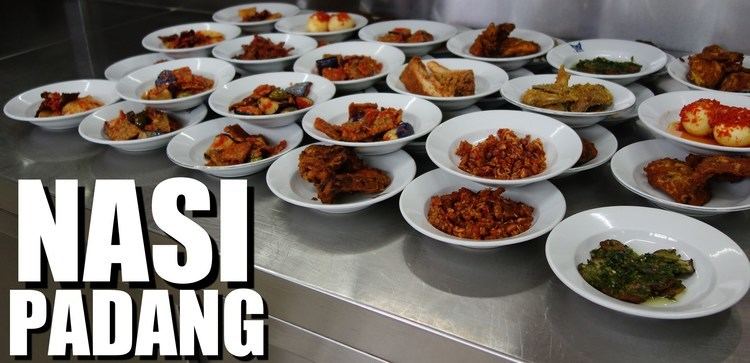
Nasi Padang served in Padang restaurants are easily found in various Indonesian cities in Sumatra, Java, Kalimantan, Sulawesi, Nusa Tenggara, and Papua, to neighboring countries Malaysia and Singapore, and Australia because of Minangkabau people merantau (migrating) tradition contributed to the dispersion of Minang diaspora outside of their traditional homeland in West Sumatra. Based on CNN Travel, Nasi Padang is listed as one of 40 food that Singaporeans cannot live without.
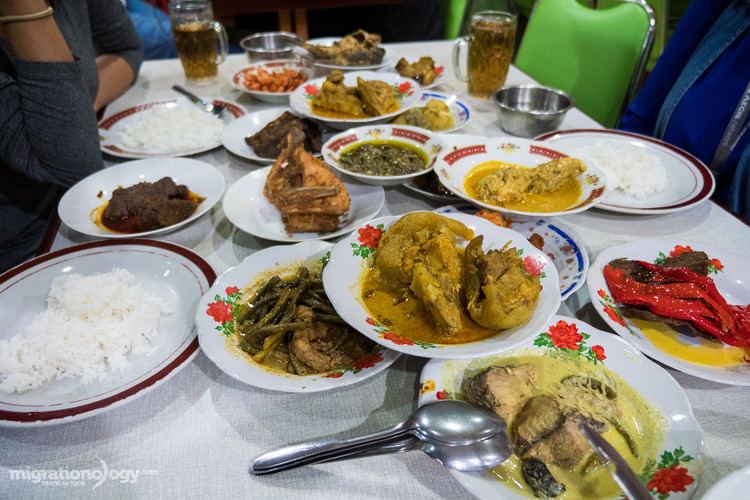
Nasi padang by kvitland
Serving

There are two types of serving in a Padang restaurant, the pesan (ordering) and hidang (serve) method. Pesan is the most common way — usually done by a single or two customers — the customer examine the window display and choose the dish they wish to consume directly to the waiter in front near the window display, and the dish is promptly served. This is usually done in common small scale Padang restaurant.

In a larger Padang restaurant dine-in, the festive hidang (serve) style is usually done. This mini banquet is most suitable for dining in group. After the customers are seated, they do not have to order. The waiter with stacked plates upon their hands will immediately serves the dishes directly to the table. The table will quickly be set with dozens of small dishes filled with richly flavored foods such as beef rendang, curried fish, stewed greens, chili eggplant, curried beef liver, tripe, intestines, or foot tendons, fried beef lung, fried chicken, and of course, sambal, the spicy sauces ubiquitous at Indonesian tables. A dozen of dishes is a normal number, it could reach 14 dishes or more. Nasi Padang is an at-your-table, by-the-plate buffet. Customers take — and pay for — only what they have consumed from this array.
In Minang food establishments, it is common to eat with one's hands. They usually provide kobokan, a bowl of tap water with a slice of lime in it to give a fresh scent. This water is used to wash one's hands before and after eating. If a customer does not wish to eat with bare hands, it is acceptable to ask for a spoon and fork.
Dishes
The steamed rice are usually served with gulai Cubadak (unripe jackfruit gulai) and boiled cassava leaf aside. Nasi Padang dishes are actually quite similar with Nasi Kapau from Bukittinggi town. The differences mainly lies in the method of serving. The dishes offered in Nasi Padang are:
